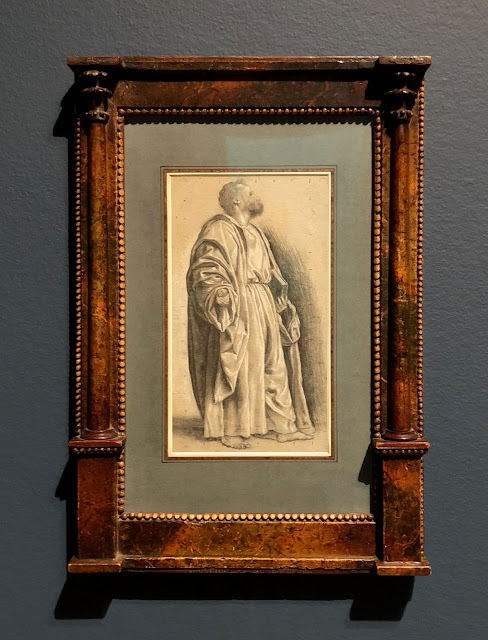"Michelangelo to Degas" at the Getty
Sixteen drawings may not sound like such a big deal. It is, with these drawings. Most must have been conceived as works of art in their own right, whatever their compositional function. One work, Degas' After the Bath, is a finished pastel, bigger than the Getty-Norton Simon Waiting.
The Getty's collection of Italian Renaissance drawings was assembled in the 1980s and 90s. The nine additions here transform that already esteemed holding. Parmigianino's Head of a Young Man (1539-40) may date to the year of the artist's death. Should you believe Vasari, Parmigianino was by then a scary, alchemy-crazed whack job. Head of a Young Man shows the artist in full command of his talent and invention. (The Getty has become the place to see Parmigianino in America, with a luminous painting acquired last year, plus five other drawings.)
The Getty does not have a painting by Federico Barocci. It comes close with this show's oil-on-paper Head of Saint Joseph (c. 1586), exploring a head in The Visitation, at Rome's Chiesa Nuova. The museum owns three other Barocci drawings, including a black chalk and oil reduction of the 1582 Entombment in Senigallia, Italy.
The Getty's 2017 press release on the purchase said that curators were researching "further drawings from the same collection, with a view to further acquisition." "Michelangelo to Degas" contains two loans, presumably from the Padulli trove. One is Jacopo Ligozzi's Allegory of Gluttony (1590), part of a series of deadly sins that remain amusingly relevant. The other is huge pastel study (1897) for Life, the first work in Giovanni Segantini's Alpine Triptych, displayed as a Monet-like panorama in St. Mortiz. Hugely successful, then all but forgotten, Segantini is again being appreciated as part of the multi-national story of modernism.






Comments